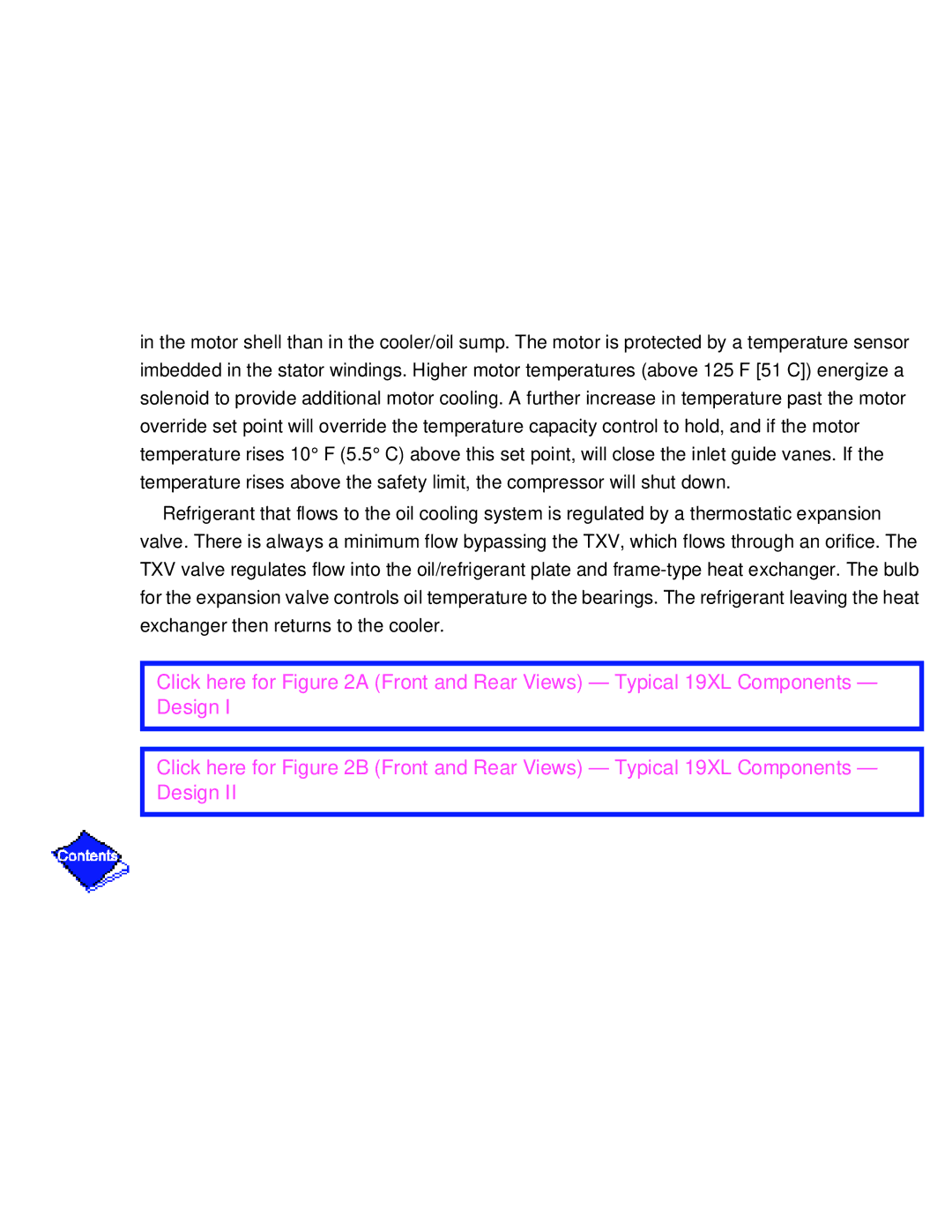
in the motor shell than in the cooler/oil sump. The motor is protected by a temperature sensor imbedded in the stator windings. Higher motor temperatures (above 125 F [51 C]) energize a solenoid to provide additional motor cooling. A further increase in temperature past the motor override set point will override the temperature capacity control to hold, and if the motor temperature rises 10° F (5.5° C) above this set point, will close the inlet guide vanes. If the temperature rises above the safety limit, the compressor will shut down.
Refrigerant that flows to the oil cooling system is regulated by a thermostatic expansion valve. There is always a minimum flow bypassing the TXV, which flows through an orifice. The TXV valve regulates flow into the oil/refrigerant plate and
Click here for Figure 2A (Front and Rear Views) — Typical 19XL Components — Design I
Click here for Figure 2B (Front and Rear Views) — Typical 19XL Components — Design II
